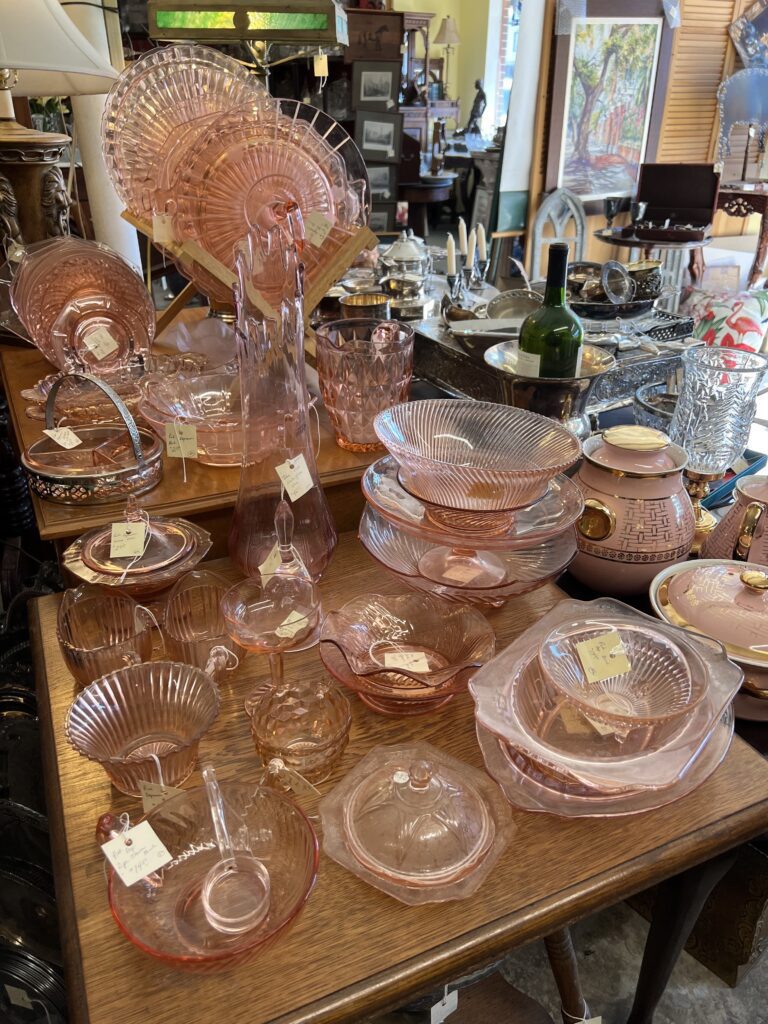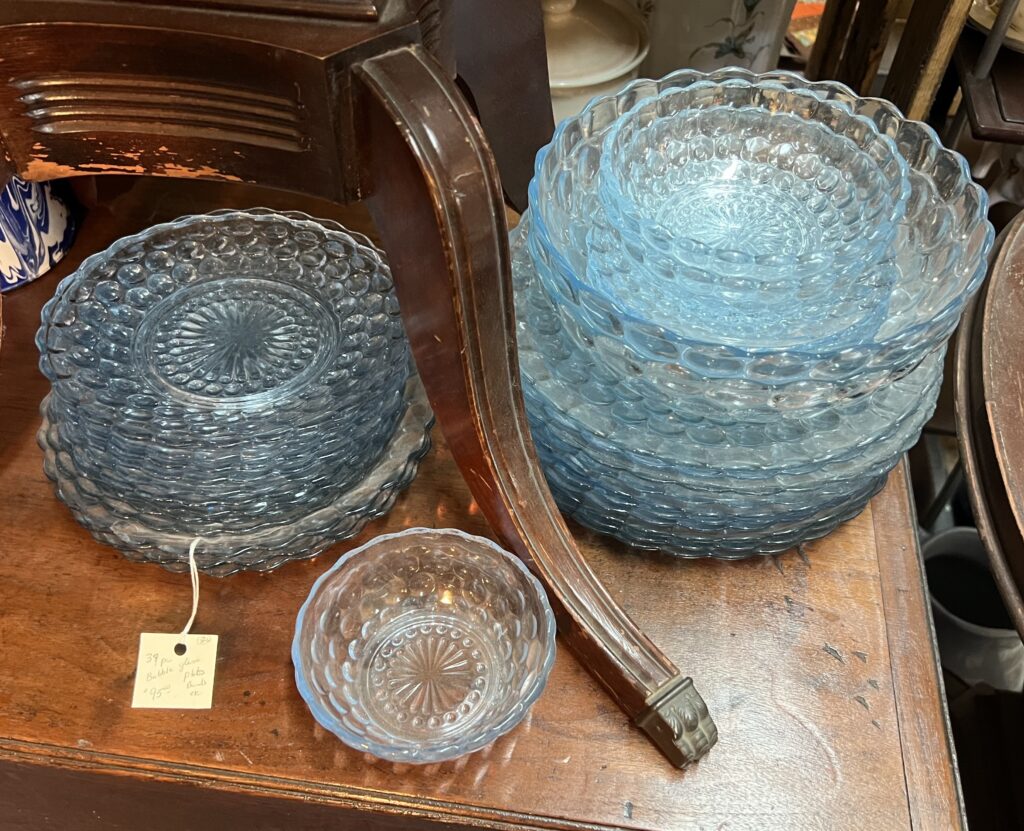Depression Glass is beautiful and valuable. If you are looking for Depression Glass, then there are things you should do before buying. It all starts with knowing the history.
Depression Glass was made during the Great Depression Era from the 1920s through the early 1940s. The glass was made in the United States and materials were found in the Ohio River Valley. The glass is colorful and has unique patterns in it that help add value. The glass was sold in stores and was also given away as freebies and premium items with other purchases.
There is a rich history behind Depression Glass that is interesting to learn about. So, if you want to learn more about Depression Glass and why it is valuable today, read below.

When Was Depression Glass Made?
Though technically the Great Depression didn’t begin until 1929, the first “Depression Glass” patterns began being manufactured in 1923. According to the National Depression Glass Association (ndga.net), the Avocado Pattern by Indiana Glass Company was the first pattern to be considered Depression Glass, and it began production in 1923. Many popular Depression Glass patterns began being produced before the Great Depression started in 1929.
Although many resources define Depression Glass as being produced between the years of 1929-1939, the truth is that the style of glass that would later be defined as Depression Glass actually began to be produced as early as 1923 and continued to be produced into the 1940s and beyond for some patterns. (See this NDGA chart for the production timeline of the 92 major Depression Glass patterns.)
The last patterns to be produced that are still defined as “Depression Glass” by the NDGA began production in 1938 and 1939. If a pattern of glass began production in 1940 or after, it is not defined as “Depression Glass” by the NDGA. Although let’s note that there are several patterns that began to be produced before 1940 and continued production into the 1940s (or later!) that are still considered Depression Glass patterns.
Why Was Depression Glass Made?
In the 1920s, glass manufacturers began investing in machinery that could mass-produce glassware.
The glass that would eventually be considered “Depression Glass” was originally made to be a cheap good that could be sold to anyone during a time when money was scarce. The beautiful colors helped brighten people’s homes and lifted their spirits.
It was a good that was cheap to make and buy, and it was sold everywhere. The glass could be found in convenience stores, home goods stores, and was even given out as a gift for purchasing certain items. (Source)
Today we have prizes like small toys in cereal boxes. During the Great Depression, you could find Depression Glass in oatmeal boxes. The glass was also given out as a gift when purchasing a specific item or spending a certain amount of money in a store. It was very common to have full sets of Depression Glass in homes back then, but now it is hard to find all matching pieces in one place.
The glass could be sold for a nickel in the past, but today you can find a pitcher made out of Depression Glass that can be sold for over $100. The value of Depression Glass all depends on the condition of the glass, the color, the pattern, and when it was made.
Often you will see people on social media finding Depression Glass in thrift stores, so this is a trendy item that is making its way back into people’s homes. Many people get into collecting the glass today and try to find all the pieces to an entire set. Some collectors sell the glass pieces they find, and others keep the glass for their own collection.
Today, the buying of Depression Glass has evolved and is now a pastime for collectors. Depression Glass can have some history, as well as be a beautiful addition to your home.
See also our full articles on Blue Depression Glass, Pink Depression Glass, and Green Depression Glass.

Who Manufactured Depression Glass?
Depression Glass was made by many companies, all making different patterns and colors of glass. Some of the biggest companies known for making Depression Glass are Hocking Glass Company (later Anchor Hocking), Federal Glass Company, the Hazel-Atlas Glass Company, and the Indiana Glass Company.
For more information on the manufacturers, check out our full article on the Companies Who Made Depression Glass.
Each company made their Depression Glass with different patterns and colors, and some are more common than others. When collecting, finding a color or pattern that is not common and has not been reproduced since the Depression is going to help with making the glass more valuable. (Source)
Finding glass by certain manufacturers is also a way to get more valuable glass. The best collectors of Depression Glass know the history of the glass, and it helps them to find the best pieces. If you want to collect Depression Glass, then get to know the colors, patterns, and the companies that made the different types of Depression Glass.

When Did They Stop Making Depression Glass?
Depression Glass stopped being manufactured in 1939 for most companies, but some still produced the product through the 1940s or even longer. Some companies also went back to the trend in later decades and made more glass pieces, and because they were not made at the same time as the other glass during the Great Depression, they are less valuable. (Source)
Because Depression Glass is almost 100 years old and was mass-produced cheaply, it can be found with some issues. Collectors are experts at finding good pieces because they can identify bad, old, broken, and ruined pieces. The age of the glass is what makes them valuable, but the condition of the glass can them less valuable if it is damaged.
The glass was not put on display when it was originally being sold. The plates, bowls, cups, pitchers, platters, and more were used by people. So, it would be common to find cracks, chips, scratches, and other signs of distress on the pieces. Some of the pieces have been passed down from parent to child, and with how much they have been used, it can be hard to find pieces in good or excellent condition. But, it is not impossible to find and collect the items you desire.

